


Cerro Gordo County Iowa
Part of the IaGenWeb Project
|
Present-day North Iowa Area Community College (NIACC) Mascot - Trojans 500 College Drive, Mason City
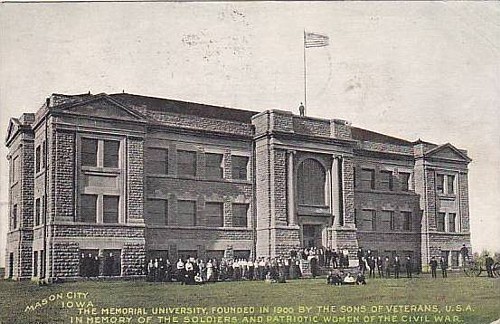
In 1918, Mason City Junior college, the first public two-year college in the State of Iowa, was established. The college grew out of a high school PTA meeting held in the Spring of 1916. The following year, the Mason city School Board passed a resolution to establish a junior college. Classes began on September 8, 1918. During the first year there were 28 students, 6 instructors, and five fields of study under the direction of Principal James RAE. Mason City residents could attend free. Tuition fees for non-residents was $10.
Globe-Gazette, Mason City, Cerro Gordo County, Iowa
Just as changes came in other educational fields so has the Mason City Junior College, organized in 1918, changed with the passing years to provide greater service to students and the community. From the beginning its purpose was to serve youth denied an equality of opportunity because they could not afford a college education away from home. Then it became apparent the Junior College could serve a broader field, that of providing a comprehensive educational program for persons of all ages, many of whom could not attend classes full time.
Enrollment was small to start with, 25 the first year, and 51 the next, but it continued to gain, approaching the 300 mark in the postwar years and then dropping slightly. J. B. MacGregor, present [1953] dean of the Omaha University, was the first dean of the Junior College, serving except for one year, from 1925 to 1929, when he was succeeded by S. L. Rugland. When Rugland entered the Red Cross service in 1943, Luelda F. Carlton was acting dean until his return for the year, 1946-47. Clifford H[ardin]. Beem became dean in 1947. NOTE: The Beem Center at North Iowa Area Community College (NIACC) was dedicated in 1972 in honor of Clifford H. Beem, who served as dean of the Mason City Junior College from 1947 to 1966. He was the director of Arts and Science at NIACC from 1966 to 1970. He retired in 1970 after a career that spanned 46 years in eduction. Dean Beem died in December of 1983, Mason City, at the age of 81 years.
In the fall of 1938 the Junior College took an important step in extending its field of service, the training of teachers for positions in rural schools. Upon completion of two years' training, students were eligible to receive the first grade uniform county certificate based on training. The success in the teacher training program suggested a vast new field of adult education that has transferred the institution into a Community College, with evening classes of all types for adults. The next step came in the 1948-49 school year when Drake University instructors came to teach an evening course, giving credit for such at the university. Meanwhile a broader development was taking place. In the fall of 1948 Alvie M. Sarchett became director of adult education and most of that year was spent in surveying community needs. An adult education council was organized. In the spring of 1949 the first general education adult night class was started, a course in New Testament literature, taught by Dr. William Morse of Drake University, with 126 enrolled. The following year the adult education system blossomed out with courses for a great variety of vocational, intellectual and recreational pursuits.
The College was located on the top floor of the high school until it moved to the remodeled Memorial University building in the 1950's. Mason City Junior College became North Iowa Area Community College (NIACC) in the late 1960's and moved into the former high school situated in downtown Mason City. Enrollment exceeded 1,700 full-time students. In 1970, the College moved to a 500-acre campus on the eastern edge of Mason City.
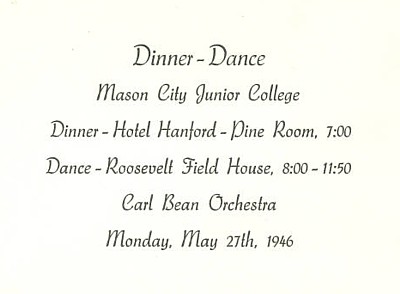
NIACC Logos
by Katie Schmitt, Assistant Editor McAllister Hall, Beem Center and Muse-Norris Center all have an interesting history at NIACC that many may fail to realize. McAllister Hall was first named "Building A" until it was dedicated to Dr. William McAllister. He was a Manly physician and became the President of the board of directors from 1966 to 1972. When he retired they honored him by naming "Building A" after him and presenting a sweatshirt with "NIACC's Doc" on it, playing into his choice of career. This was the first of many buildings to be named. The Beem Center was dedicated in 1977 in honor of Clifford H. Beem, the dean of the Mason City Junior College from 1947 to 1966. He then went on to be the director of Arts and Science at NIACC from 1966 to 1970. It was a tribute to the leadership he provided to the academic community. He was known to an entire generation as "Dean Beem" and many thought Dean was his first name. The Beem Center houses the NIACC Library which has over 90,000 volumes of books, government publications and a variety of non-book media items (filmstrips, videotapes, films, cassettes, microfilms, etc.). Also included are nine national newspapers, 33 north Iowa area newspapers, 370 periodicals. Within the Library is the Cafe Bean.
In 1990 the Muse-Norris Center was named in honor of Elizabeth Muse Norris and her father William F. Muse to thank them for a donation that helped complete the building. Norris was a long time Mason City philanthropist and her father was a former Globe Gazette owner and editor. They also contributed to a charitable fund and scholarships. In 1997 the $2 million Murphy Manufacturing Technology Center was dedicated to David and Phyllis Murphy who helped fund the project. The Pappajohn Center was dedicated to John and Mary Pappajohn of Des Moines in 2001. They donated $1.1 million in hopes the new center would create new businesses in the area. John grew up in Mason City and went to the Mason City Junior College before it became NIACC. The Buettner Careers Building and Pierce Administration Building were named at the same time in 2002. The Careers Building after David Buettner, a 20-year president, and the Administration Building after David Pierce, Buettner's predecessor of 10 years. To get a new or existing building, or a portion of a building, named after an individual a nomination must be made to the College President who will then discuss the matter with his faculty, staff, community representative and board members. He will then make a recommendation to the College Board of Directors. The individual can be living or deceased but must have significance to NIACC. Only after getting permission from the donor(s) and the approval of the College Board of Directors, will the announcement be made to honor the individual.
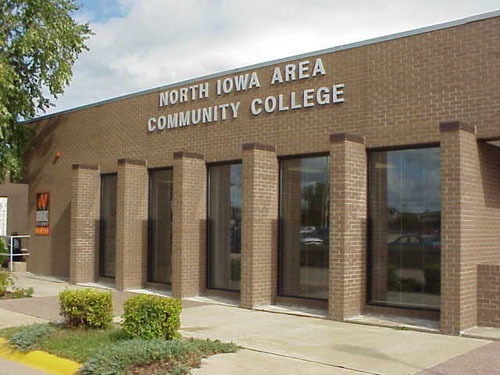
The University of Iowa Alumni Association
University of Iowa, Iowa City, Iowa
The Beem Center, built in 1977, is named after Clifford H. Beem, who was known as “Mr. Junior College” throughout Iowa for his leadership with junior college efforts locally and beyond. Beem was named Dean of Mason City Junior College in 1947. When Mason City Junior College became North Iowa Area Community College in 1966, “Dean Beem” became the Director of Arts and Sciences. He retired in 1970 after 46 years in education. His legacy lives on through the Clifford H. Beem Memorial Fund, which provides student scholarships annually through the NIACC Foundation.
* Clifford H. Beem, the only child of Ezra Delany & Ora E. (Harnett) Beem, was born January 2, 1901, Marion County, Iowa, and died
at the age of 82 years in December of 1984, Mason City, Iowa. He was interred at Pleasantville Cemetery, Pleasantville Township, Marion County, Iowa.
April 18, 2008 90 Years of Excellent Education
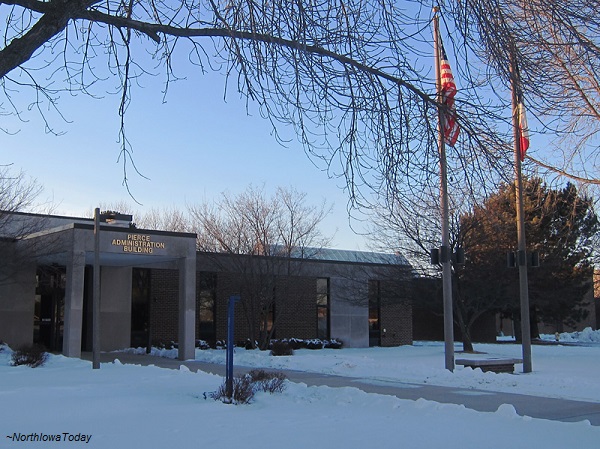
"For those of us, past and present, who have been fortunate to work for Mason Junior College and NIACC, I want to 'thank you' for providing us the opportunity to do so. When the history of higher education is written, I believe it will state that the most important initiative in the history of education will be the development and deployment of community colleges throughout the United States. Thanks for allowing us to participate in the community college movement. It's been a great 90 years! Together, we have made a difference! May NIACC and our region be blessed by many more anniversaries promising a better quality of life for all," Dr. Michael MORRISON, NIACC president, said. A look back at the 90 years in which NIACC has served the region, shows the strategic impact the College has had on the people and communities served in the area. North Iowans have long prided themselves as having a highly regarded community college, providing overwhelming public support for their "people’s college." The College began in 1918 as Mason City Junior College, which not only carried the distinction of being the very first public two-year college in Iowa, as well as one of the first of such academic institutions in the entire country. According to historical archives, the idea for a junior college formulated at a high school PTA meeting in the spring of 1916. Records indicate that the following year the Mason City School Board passed a resolution establishing a junior college, and on September 9, 1918, Mason City Junior College classes began on the top floor of the high school building. The first year of the Junior College consisted of 28 students, six instructors and five fields of study under Principal James RAE. Tuition was free to Mason City residents and $10 to others. Enrollment increased to approximately 300, before declining during World War II. By 1945, as a result of the war, veterans taking advantage of the G.I. Bill accounted for more than 25 percent of the total enrollment. The College relocated in the mid 1950's from the high school building to the remodeled Memorial University Building on the Roosevelt campus, where it remained for 12 years, with enrollment increasing from 280 to 1,390. By 1960, vocational/technical education became an important addition to the college programs, with the Electronics program leading the way. 1965 marked the year that Iowa's 61st Assembly enacted legislation that would create a statewide system of two-year postsecondary educational institution, identified as "Merged Area Schools." The next year, based on a strong foundation built on the almost 50 years of existence as Mason City Junior College, North Iowa Area Community College (Merged Area II) opened its doors in the old Mason City High School building located in downtown Mason City. At that time enrollment exceeded 1,700 full-time students.
Dormitories were added in 1972 to house over 450 students, and by 1979, two additional buildings, the Beem Center and the North Iowa Community Auditorium, were completed.
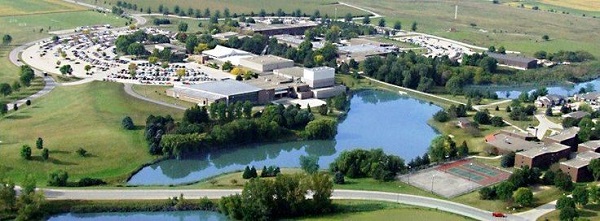 The NIACC campus today consists of a 500-acre countryside campus consisting of contemporary, state-of-the-art facilities including the Student Activity Center, Muse-Norris Conference Center, and the Murphy Manufacturing Technology Center, as well as the lakeside student apartments. A new Recreation Center will open in Fall 2008. Satellite locations include Community Education Centers in Charles City, Garner, Hampton, Lake Mills and Osage. Today, over 3,200 students are enrolled in classes for college credit. NIACC's faculty-student ratio is an impressive 13:1, and class sizes average 20-30 students. Approximately 350 students live on campus in the lakeside housing facilities. In addition, approximately 1,000+ area high school students a year get a "head start" on their college education and careers through partnerships with NIACC. NIACC has always strived toward progressive and strategic initiatives that have made a positive difference in the lives of North Iowans, making the College a strategic asset for all North Iowans. As a strategic asset, NIACC shoulders a high level of responsibility and accountability for all constituents. While celebrating a tremendous history that turns 90 years strong, NIACC looks to carry those great traditions into the future. The complex economic and social issues faced today confirm the vital and pivotal role that NIACC must play in shaping a good quality of life for North Iowans and in determining worthy responses to present and future issues. Overall, more than 26,000 people have graduated from NIACC (or predecessor Mason City Junior College) since the college was established 90 years ago. Considering that what was once an institution where a mere 25 students opted to continue their educational opportunities in North Iowa, the past accomplishments combined with the upbeat vision for the future will ensure quality, progressive and comprehensive learning opportunities in North Iowa for another 90 years. NIACC has indeed come a long way, and will continue to grow. This year represents the 90th year of NIACC's tradition of excellence in education and service!
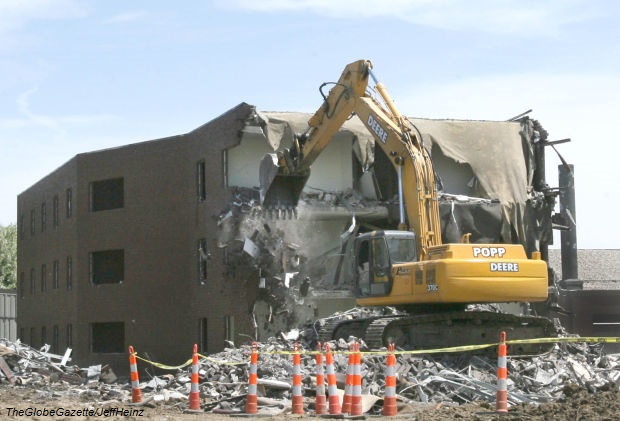 Popp Excavating of Osage began demolition of the southwest wing of NIACC's old dorms. Six student
apartments located on the campus will remain standing but will be used by assistant coaches or new instructors who need a place to live.
 Campus View Housing Complex opened in August of 2015, featuring 234 rooms with 394 beds, a computer lab which is open 24 hours, floor lounges with big screen TVs, laundry facilities and a convenience store. InVision Architecture designed the complex; Henkel Construction was the construction manager.~ The Globe Gazette, August 21, 2015
SOURCES:
|
Return to Cerro Gordo School Index Page Return to Cerro Gordo Home Page